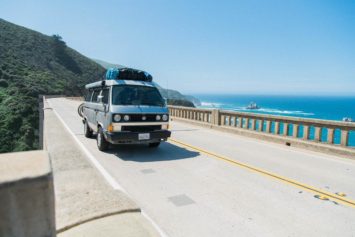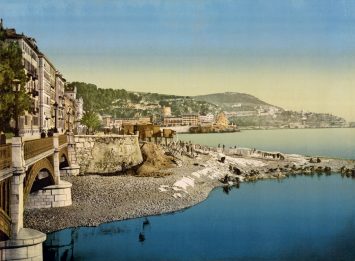Locked behind the iron curtain for many years, most Eastern European countries have only recently opened up to international travel, and what visitors have found is an area culturally rich, and steeped in history.

Eastern European countries are less expensive than many other European destinations and yet they have as much to offer. Russia, the largest country on earth, extends from the tropical beaches in the south to the frozen Arctic north.
Although the entire area bears the scatterings of ancient ruins and Orthodox church domes that dominate the skyline, Romania and the Czech Republic are standouts with castles, palaces, cobbled streets and ancient churches, that share the limelight with contemporary cities.
Many of the countries in this area have well developed winelands, unspoilt mountain landscapes, and a treasure trove of ruins and relics of the many people that have made this home.
Quick Navigation
ToggleCountries in Eastern Europe
Bulgaria
Bulgaria situated in South East Europe, on the Black Sea, has an impressive history with diverse cultural influences. Ruins of Roman settlements are to be found all over the country, and the capital Sofia dates back to the fifth century BC.

Bulgaria is home to some of the most magnificent and best-preserved churches. Every city in Bulgaria is home to gold-domed Russian Orthodox cathedrals that house icons framed in gold alongside mosaics and murals of exquisite beauty.
The National Park boasts cave churches that have been carved out of limestone by eleventh-century hermit monks. In the countryside, red rock formations caused by erosion creates a fantasy landscape, the peaks of which support ancient fortresses.
Whilst the turquoise waters of the Black Sea boast seaside resorts that draw visitors from all over Europe, the ski resorts in the seven mountain ranges of Bulgaria are some of the best on offer.
Belarus
The biggest landlocked country in Europe is also one of its least known. Belarus is endowed with unspoiled natural beauty.

Nearly forty percent of the land is forested. It has more than twenty thousand rivers and seventeen hundred hectares of marshland. The two national parks are home to the rare European bison.
The country still holds onto its Stalinist background, and the capital city Minsk boasts a mix of Soviet architecture and stylish older buildings. Here visitors can get a glimpse of what the Soviet lifestyle was like. Belarus is even home to one of the last remaining collective farms in the world.
Ancient buildings such as castles, monasteries and cathedrals, including the Saint Sophia Cathedral, built in 1044, rub shoulders with modern Soviet buildings. Russian Orthodox churches and Catholic Cathedrals share spaces, and the people celebrate Christmas twice a year on the 25th of December and on the 7th January.
Czech Republic
Settled by the Celts in 300BC The Czech Republic is a history lover’s paradise. It’s capital city Prague, dubbed the city of a thousand spires, was fortunate enough to escape damage during the Second World War, and so it boasts some of the most original ancient structures in Europe.

This is a country full of architectural masterpieces, and great beer.
Preserved renaissance houses on cobblestone streets stand below castles and lavish palaces, with artworks, murals and furnishings of unbelievable opulence, the towering golden spires of the cathedrals define the skyline and on the inside gilt framed icons, frescos, wooden carvings and latticework gleam warmly in the candlelight.
Outside of the cities, the country is full of green rolling hills, rivers, forests, vineyards and delightful little villages.
Hungary
The beautiful Danube River runs through the city of Budapest and into the vineyards in the countryside beyond, where folk dance and music is very popular.

Roman ruins, Baroque churches and colorful medieval towns are scattered all over the countryside. Hungary has a history that spans one thousand years. Almost all of the current grand buildings in Budapest were built in 1896 to celebrate the arrival of the Magyars in the Carpathian basin one thousand years earlier.
Hungary had formed part of the Austro-Hungarian Empire and much of its architecture is similar to that found in Austria.
With more than one thousand natural springs, there are spa baths all over the country. Budapest alone has 125 thermal springs, historically enjoyed by the Ancient Romans and Ottoman occupiers, and today a draw card for foreign tourists.
Moldova
Previously part of the Soviet Union, Moldova lies between Romania and the Ukraine. It is one of the least visited countries in Europe, and the countryside remains largely unspoiled.

It produces some of the world’s best wines and is becoming well known for its wine tours. Visiting the countryside is like taking a step back in time.
The people are the poorest in Europe, but they are welcoming and friendly. Many live in quaint villages, which still farm with manual farm implements and use horse-drawn carts to transport their goods.
In villages, you’ll find people garbed in traditional dress and playing folksy musical instruments. The capital city, Chisinau, on the other hand, has modern facilities, wide-open green park areas and many historical sites.
Russian Orthodox churches and monasteries have been reopened, and the interiors filled with antique and colorful icons are well worth a visit.
Poland
Poland is one of the biggest countries in Europe and one of the least expensive to visit. It has also managed to evade the hoards of tourists that crowd into other European destinations. Yet Poland has the same medieval charm and a lot more natural beauty than some of the preferred destinations.

Although much of Poland was destroyed during the Second World War some cities remained intact and in others, the citizens rebuilt their lost heritage. As a result, medieval buildings and cobbled streets combine with lively commercial centers and nightlife in the major cities.
Ancient structures include wooden churches, Gothic castles and Teutonic fortresses. Poland’s countryside remains relatively unspoiled. It boasts the remains of the primeval forest that once covered Europe and is home to the last survivors of the European Bison that used to roam all of Europe.
Mountain trails abound in the national parks whilst the Lake District offers great opportunities for canoeing or sailing, and the Tatra Mountains are good for skiing, at a fraction of the cost of a skiing trip to the Alps, and the isolated trails are great for hikes in the summer.
Romania
Romania is one of the most interesting countries in Europe, and yet it remains one o f the most affordable. It has a rich cultural history, and vast unspoiled natural resources.

Surrounded by the Carpathian Mountains and heavily forested regions of Transylvania, the rolling green hills boast ancient monasteries, fairy tale castles and an abundance of wild life.
Pretty Saxon villages with their colorful walls and terracotta roofs are all over the countryside. Bran Castle, the birthplace of Dracula, is situated in a twelfth century town, one of the best-preserved old towns in Europe.
Romania has the largest population of bears and wolves in Europe and deer, wolves and bears occupy large portions of the forested mountainside.
The Danube Delta, is the second largest river delta in Europe and it is the best preserved. It has the largest reed beds on earth and is home to wild horses, hundreds of bird species, fish and wildlife.
Russia
It’s worth overcoming the bureaucratic requirements to visit the largest country in the world. Mysterious, romantic and with an interesting and sometimes tragic history, Russia boasts sumptuous castles, interesting architecture and beautiful landscapes.

It is a land of vast contrasts from subtropical beaches to the frozen Siberian tundra. Vast pine forests grow besides the soaring Caucasus Mountains, the Valley of Geysers is the second largest geyser field on earth, and Lake Baikal is twenty five million years old and holds twenty percent of the world’s fresh water, making it the oldest and deepest lake on earth.
Russia is home to great classical music, ballet, operas and literature. Some of the greatest artistic masterpieces in the world can be found in her museums and her churches.
Domed Cathedrals dating back as far as the twelfth century, monasteries, magnificent castles, quaint villages and perfectly preserved wooden structures bear witness to the rich cultural history that is Russia’s.
Slovakia
Situated in central Europe, Slovakia is known for its natural beauty and for its ancient castles. The capital Bratislava is the smallest capital in central Europe, and in this city modern and ancient buildings touch shoulders.

Bratislava is known for its great nightlife. The pedestrian only old town boasts sidewalk cafes and well kept medieval homes along cobbled streets.
Nature lovers head for the Tatra Mountains to ski or snowboard in winter and in summer to explore the deep valleys and soaring peaks amid crashing waterfalls and burbling streams. In an area of only fifty thousand square kilometers there are nine national parks.
Quaint churches, chateaux and castles are scattered all around the countryside. Fortresses and ancient walls top mountain cliffs, and ornately decorated wooden houses and churches surround moated palaces.
Ukraine
Ukraine, situated on the South West of the Black Sea, is Europe’s largest country. With over twenty thousand lakes, eleven million hectares of forest and thousands of streams and rivers it has an abundance of natural resources.

There are also thousands of miles of mountain slopes offering great ski destinations at a much lower cost than many other ski havens. Ukraine is one of the most affordable destinations in Europe.
The Carpathian Mountains contain parts of the last of the Primeval Beech forest that used to cover Europe. The mountains are full of quaint villages and mountain trails great for hiking or cycling. The lakes and waterways tempt water sports enthusiasts to take to the water.
In the cities, medieval buildings stand side by side with communist-era buildings. Most cities have splendid Russian Orthodox churches with their signature gold-plated domed roofs and magnificent interior artwork.


